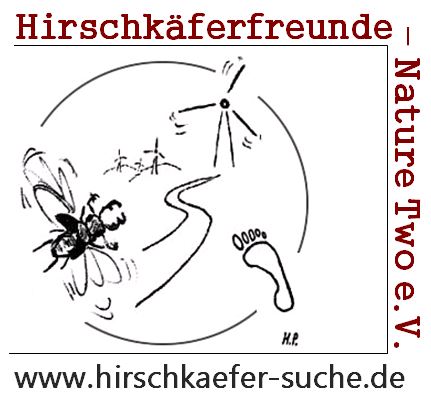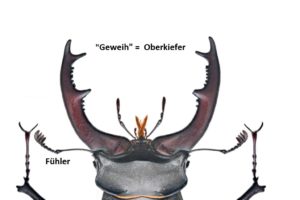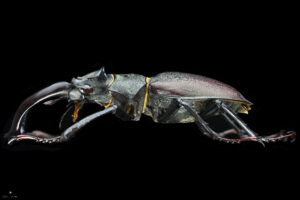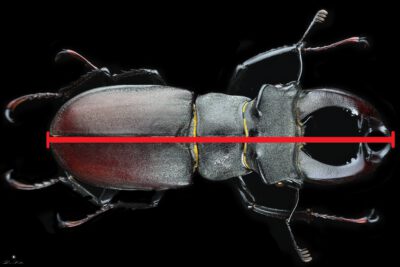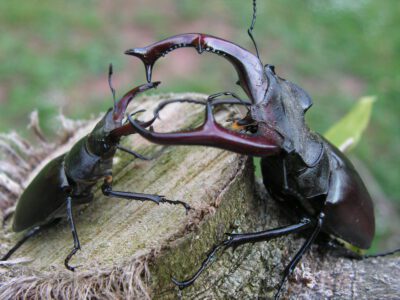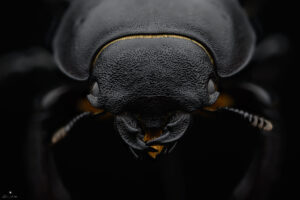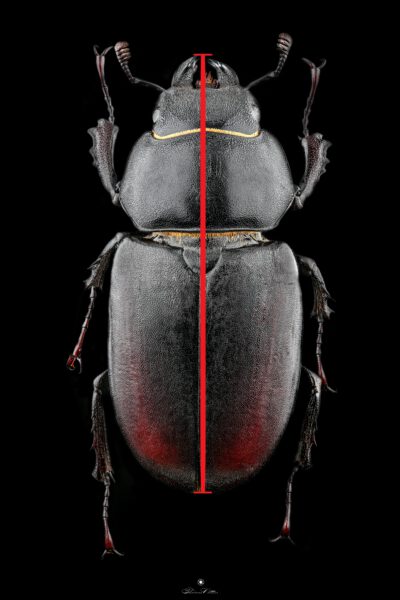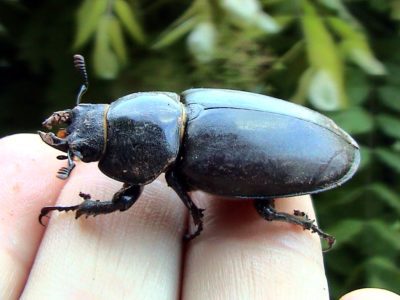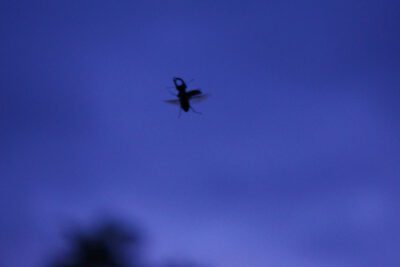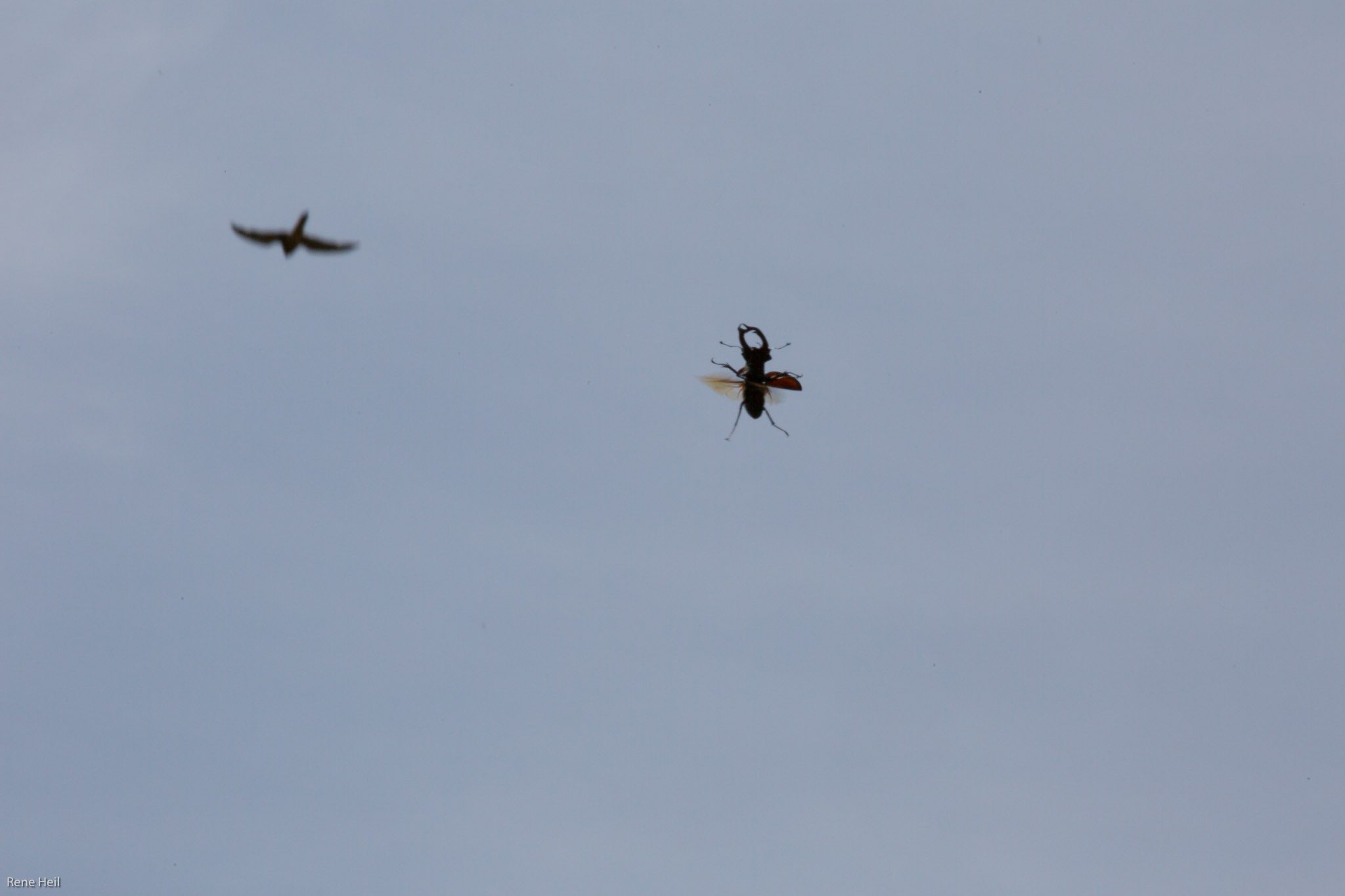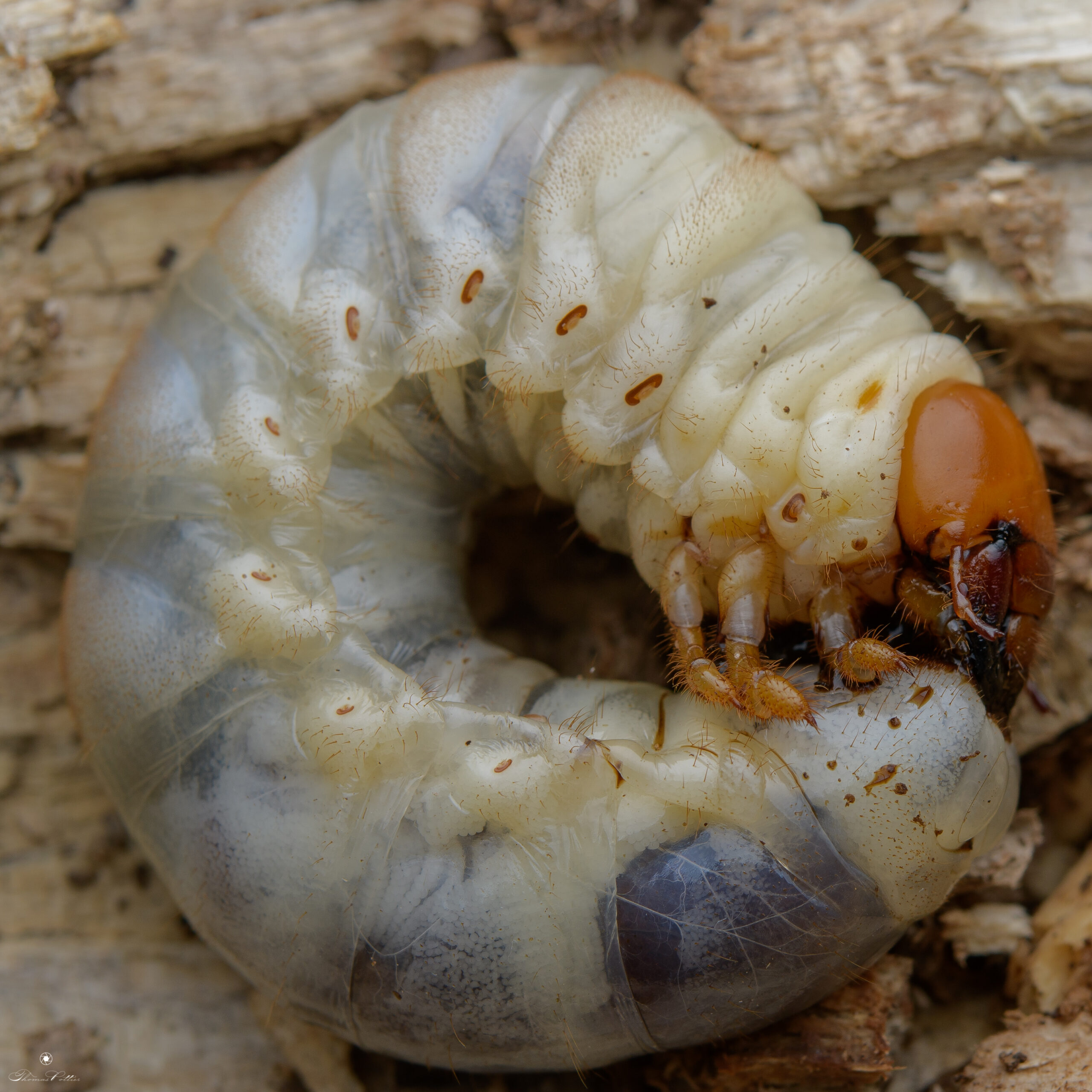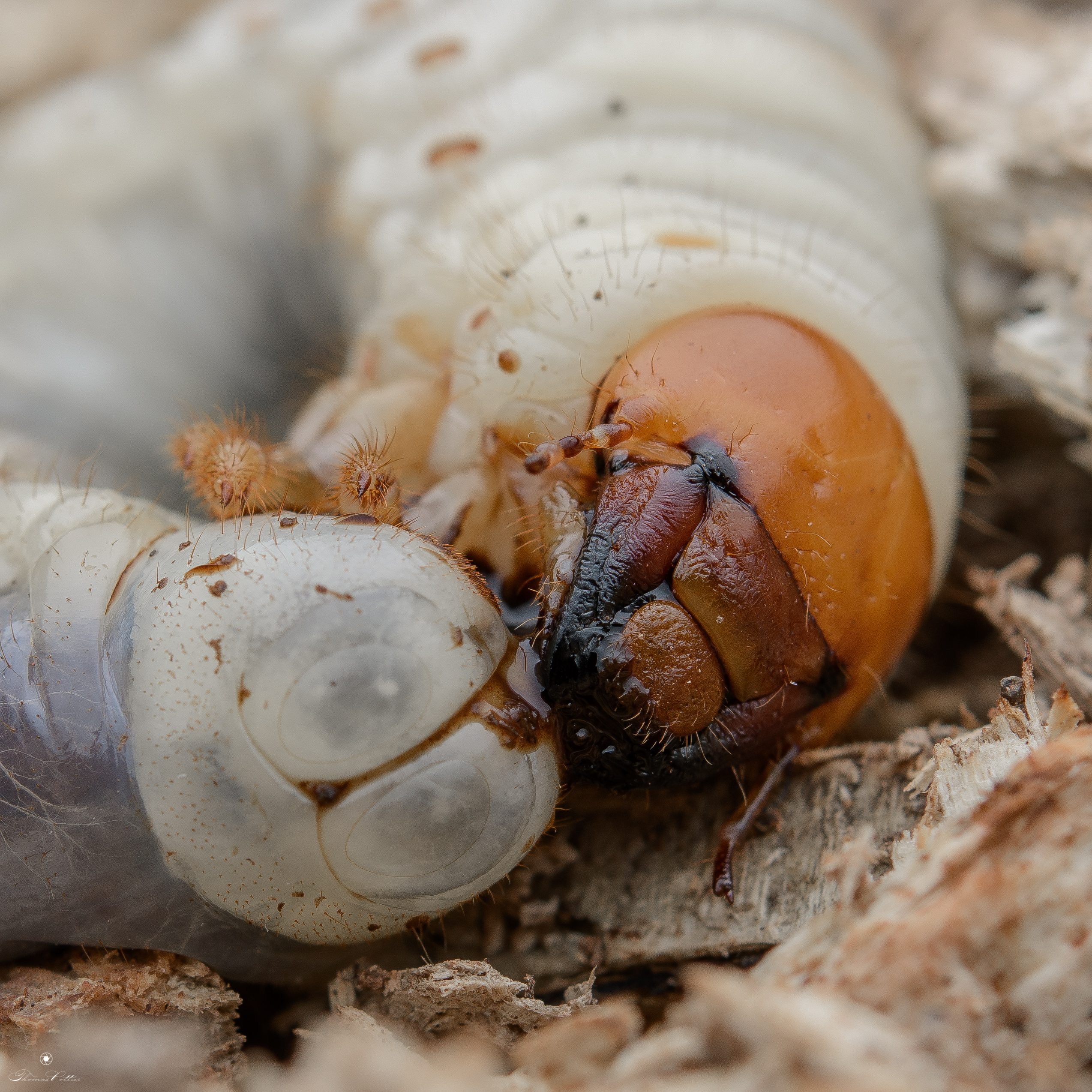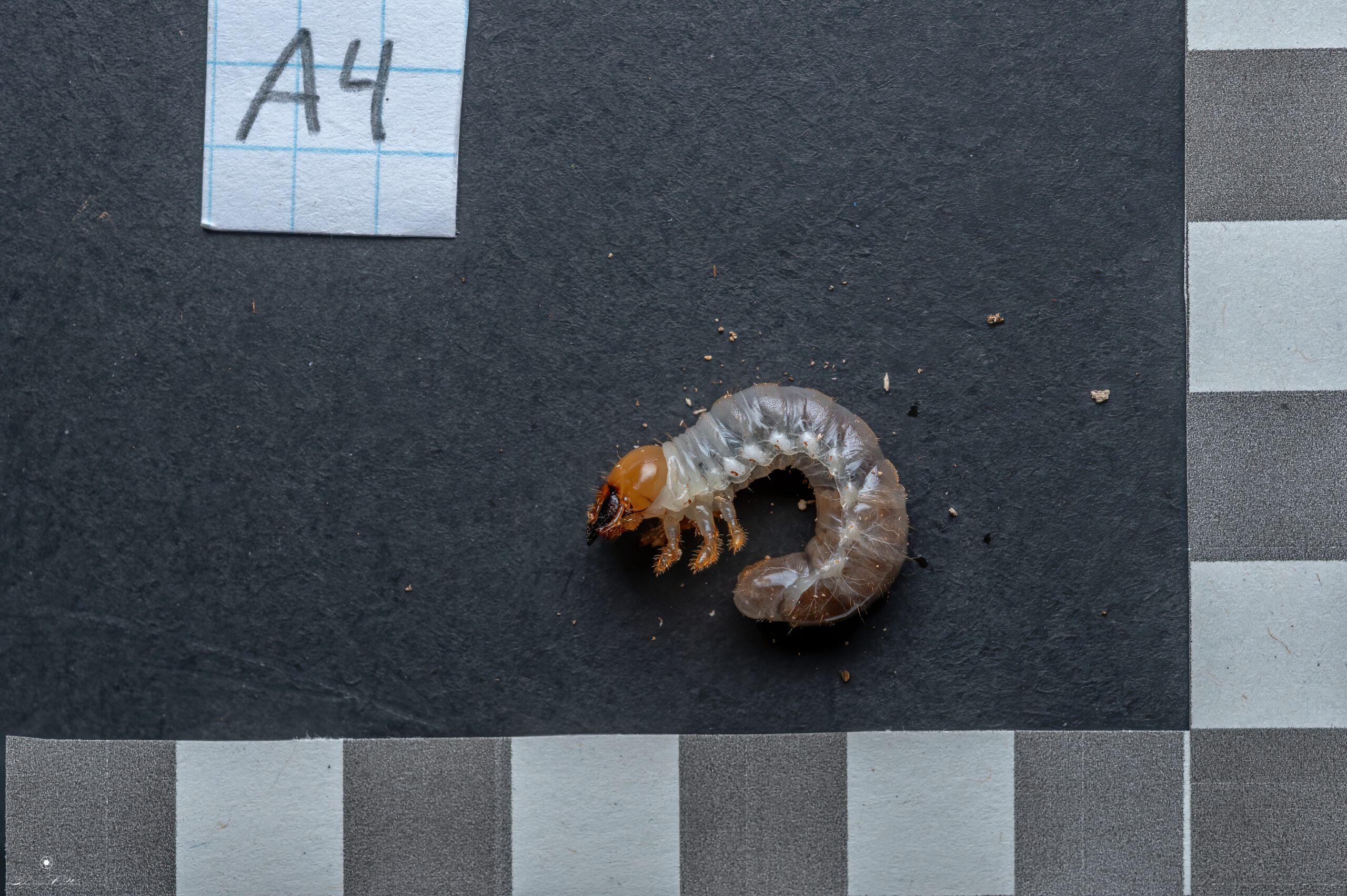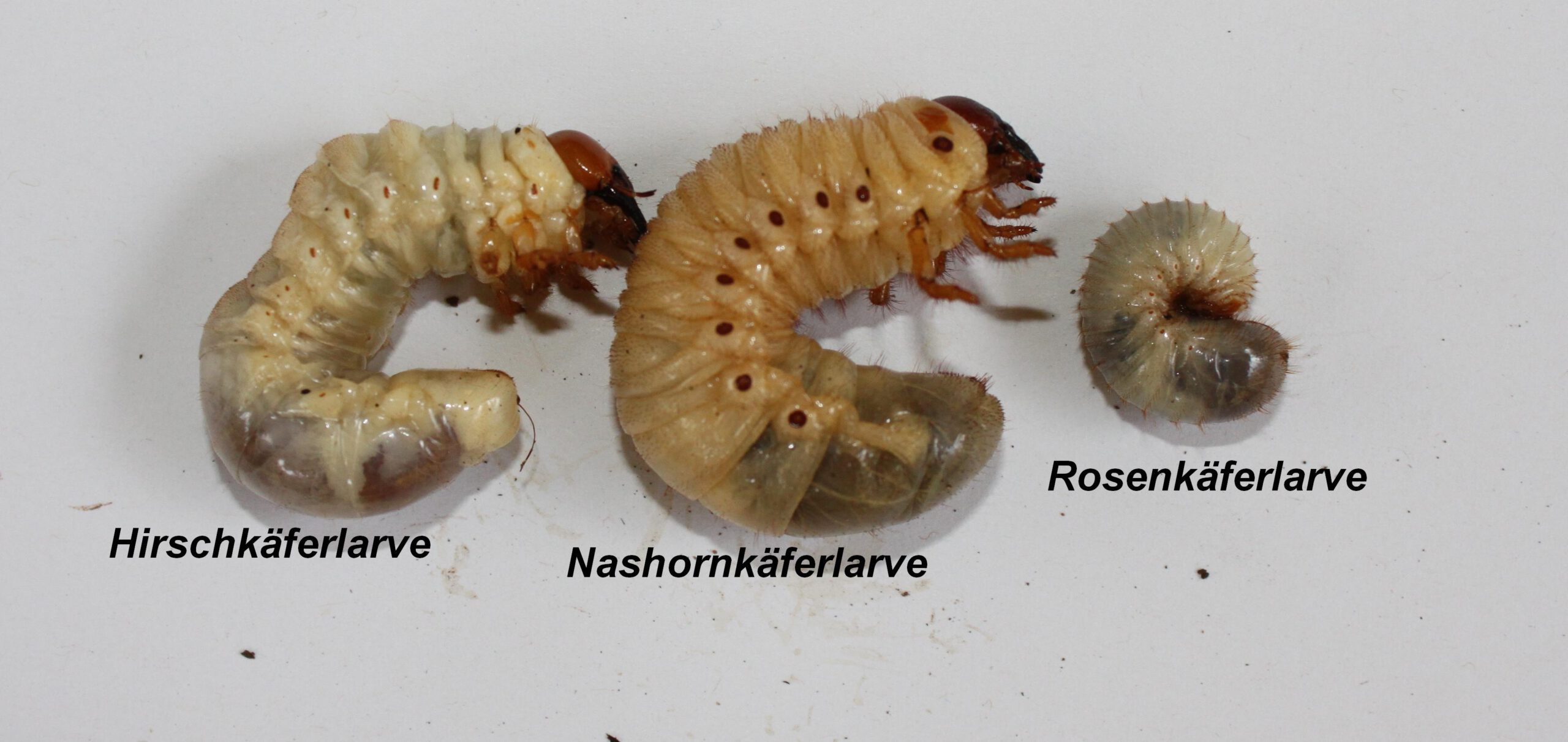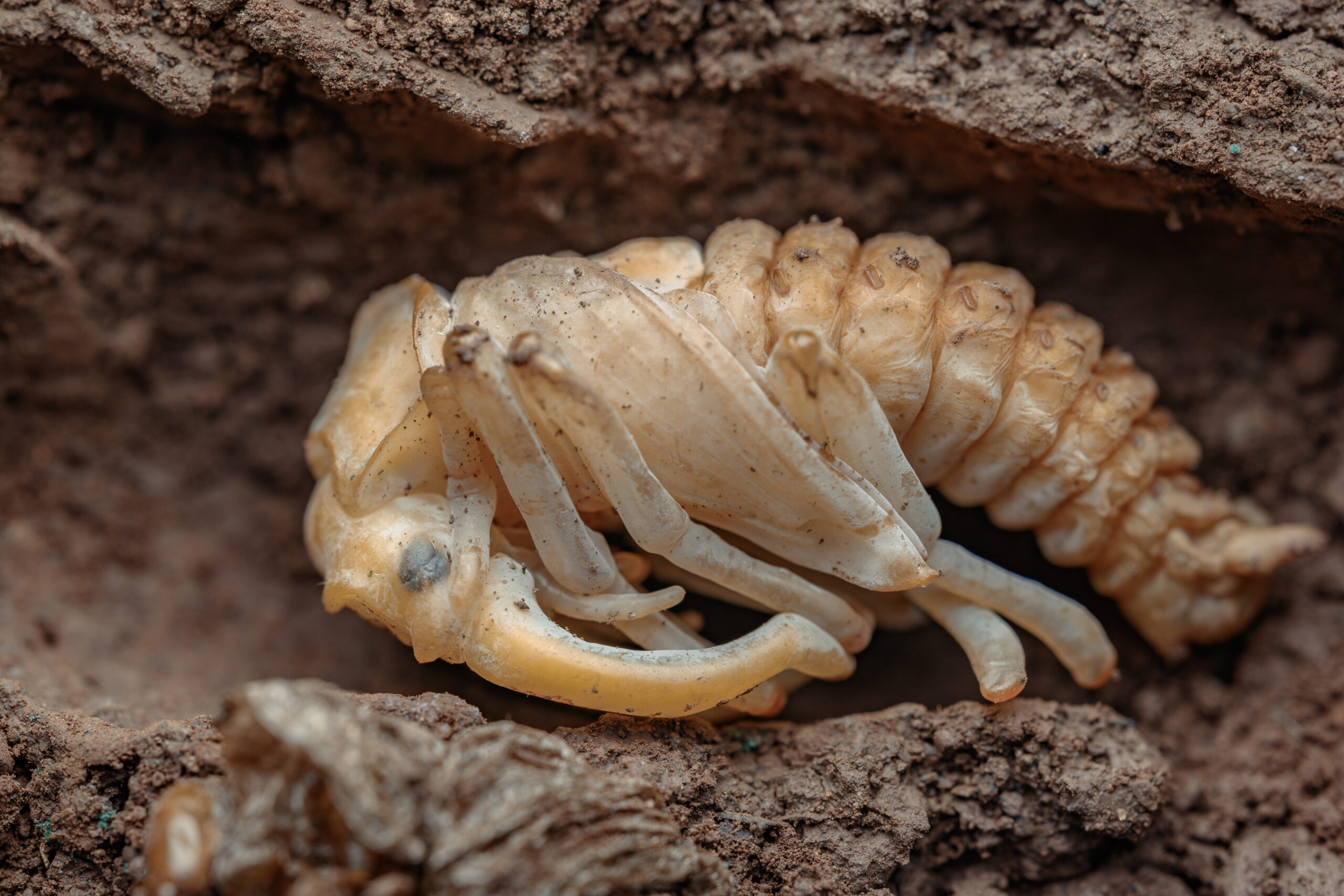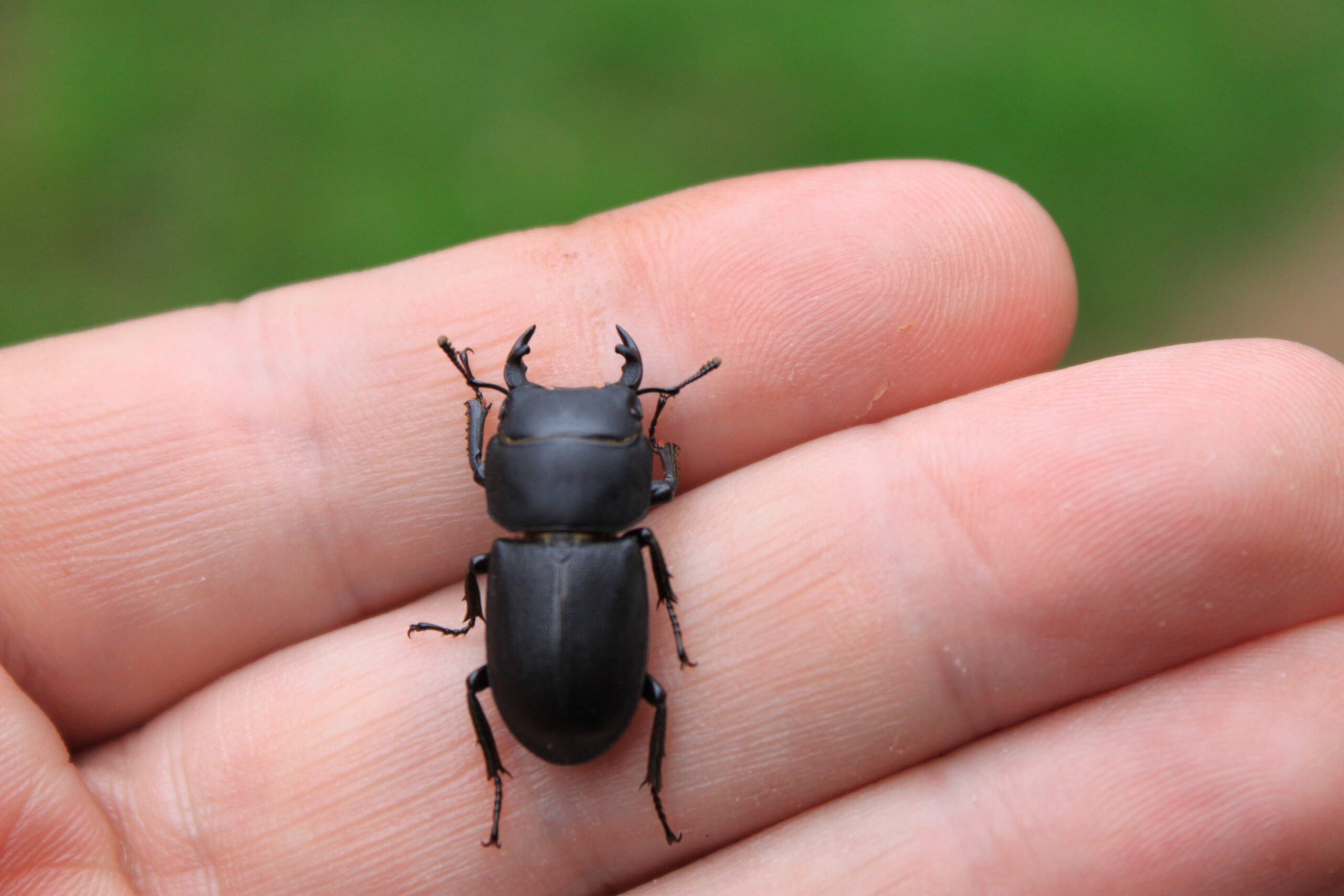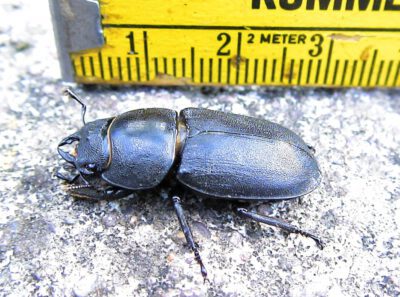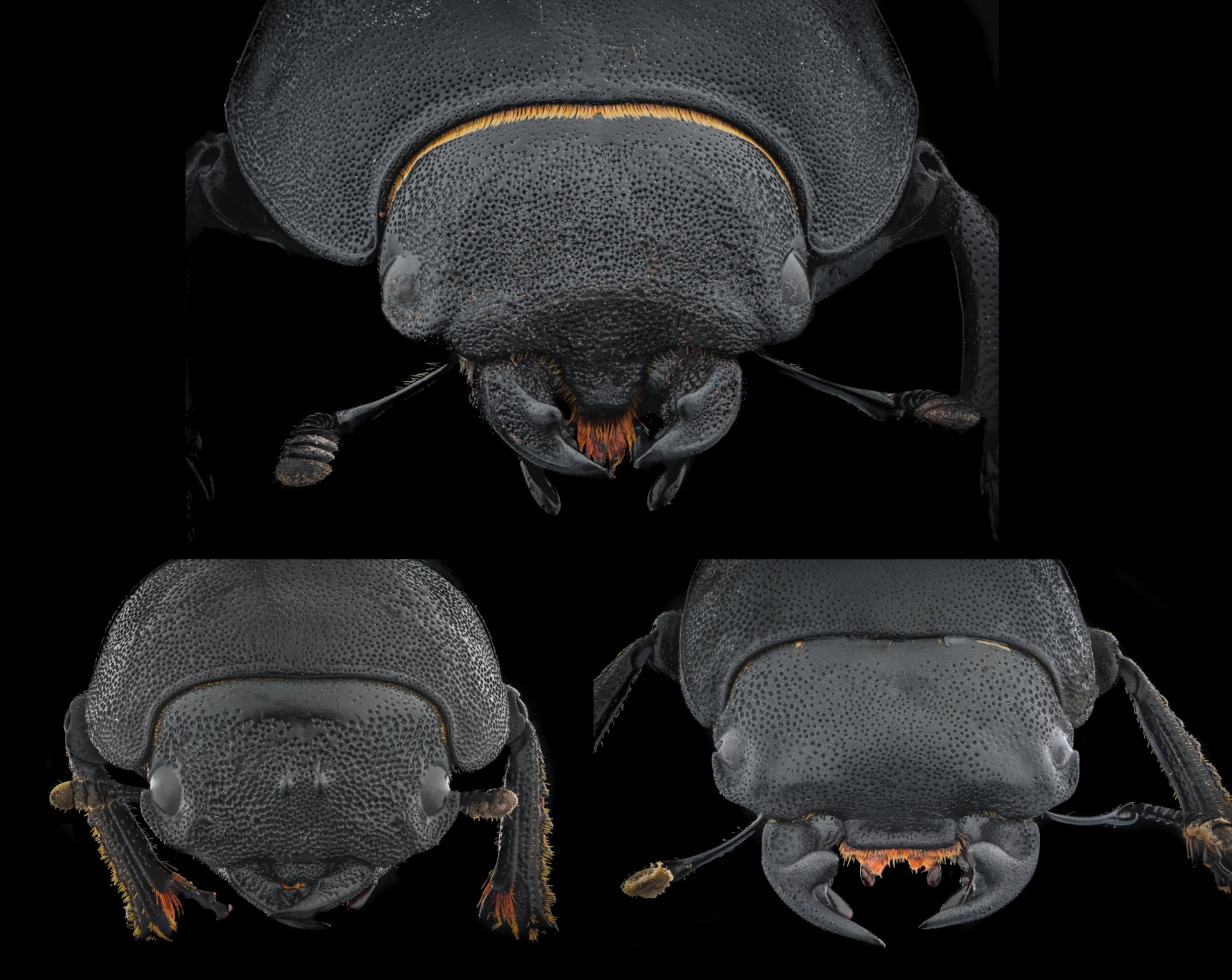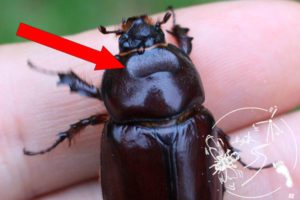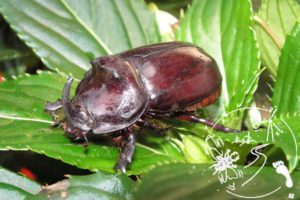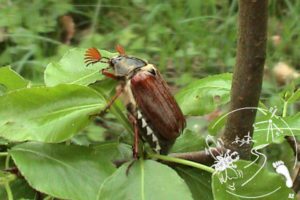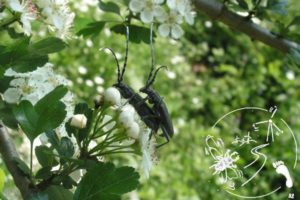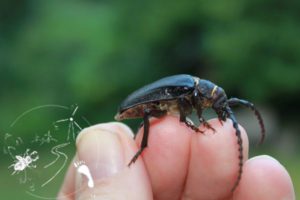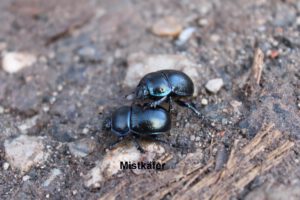Identifying stag beetles
Info
Look at your beetle in peace. Stag beetles are, if you meet them on the ground or on a tree usually very sluggish, have no “fear” and do not run away immediately as for example a ground beetle, which makes all honor to his name when disturbed. However, this calmness is often also tactics, the beetle does not want to attract attention by its motionlessness. If you turn away, the beetles often disappear very quickly. Therefore, take a photo directly!
Male stag beetle
With the male stag beetle, there is actually no possibility of confusion when looking closely. The upper jaws (mandibles) explain his name by itself. Longhorn beetles and ground beetles have partly very long antennae. The antennae of the longhorned beetles resemble the horns of an ibex, while the mandibles of the stag beetle resemble the antlers of a stag.
The “kneaded” antennae of the stag beetle on the other hand, are typical for the family of Lucanidae, also those of the females are “kneaded” This can still be seen very well with the naked eye or with a magnifying glass. The antennae are comb-like at the end.
The sizes and the upper jaw shape vary significantly in the males.
Female stag beetle
Size (2,5) 3-5 cm
Color black-brown
Wing coverts shimmer brown-red depending on the incidence of light
In females the mandibles are much smaller, so pay even more attention to the presence of the kneaded antennae with club-like fanning or to the typical hairy, golden-yellow shields on the upper side of the thighs, then you can actually only confuse the beetle with the Beamed Shrike, a close relative of the stag beetle.
Female stag beetles are usually larger than 3 cm, but sizes below 3 cm do occur in rare cases. Most importantly, the beetles usually appear larger to you as a “layman” because the legs always extend somewhere beyond the body length. If the beetle is clearly over 3 cm, then it is also broader, stronger and can then no longer be a Beamed Shrike.
Flight
Stag beetles begin their flight season when that of the cockchafer comes to an end. They are larger, and in the male the “antlers” are often clearly visible. A distinct flight sound can be heard. The rump is lowered when flying (see picture & videos & audio).
- Flight looks awkward at first glance, quick change of direction only shortly before the obstacle.
- Flying heights usually do not exceed 6-8 meters.
- Good flying evenings from 18°C +, around 21:30.
- Flights at the beginning of the season mostly only at dusk, with advancing time also sometimes during the day.
- Flying beetles make typical buzzing flight sounds.
Female at dusk
Larval determination
In the photo above you can see a stag beetle larva, a rhinoceros beetle larva and a rose beetle larva. All three always take the typical C -shape, as does the cockchafer. So not every cockchafer is a cockchafer!
May beetle larvae prefer to feed on living roots of various species.
Rhinoceros beetle larvae live on dead, decomposing plant material, preferably woody. E.g. compost piles, shredder piles, very musty tree stumps.
Rose beetle larvae also feed on dead plant/woody substrate and are sometimes found in potting soil with coarser humus contents.
Stag beetle larvae prefer perennially dead moderating tree stumps. They always need decaying wood (white rot), but also contact with the soil. They can be found up to 50 cm deep in the soil on or in the tree stump. It can also be a tree that is still alive, if it has a larger amount of rotting wood in the root zone.
However, as you can imagine, there are transitions between these demarcations. An old beam or thick fence post can sometimes be colonized with stag beetles. Likewise, in the same tree stump can be stag beetle larvae and rose beetle larvae.
In addition, all larvae start out very small, making it harder to distinguish between them. Beamed beetle larvae look confusingly similar to stag beetle larvae, and both can also be in the same tree stump. However, these larvae do not grow as large.
Suggestion:
Take a photo of the larva as shown in the photo, if possible add one of the head and rump when the larva is on its back (hold it appropriately) and send us these photos. We will help or confirm your report. And give you advice, because if you have found a larva, you have found and opened a nest, now you have to see how to proceed. We would like to help you with that.
Puppe
You can only see a stag beetle pupa if you have destroyed the protective earth shell. In that case that’s a red alert. Stop earthworks immediately, where there is a pupa, there are more and contact us immediately. We will give guidance. If you have to leave the nest, loosen the pupa together with the earth body and put it carefully into a plastic box and close it. Cool, but not cold.
Lesser stag beetle
Dorcus parallelopipedus
ca. 1.6-(3.2) cm long, flatter than stag beetle females.
Males and females very similar; larvae and beetles mostly in above-ground wood. However, larva as well as adult beetle have stag beetle characteristics (same family).
You can usually rule out or confirm this beetle based on its size. In case of doubt please send us a photo, without a direct living comparison it is difficult.
Info
Lesser stag beetles are usually well under 3 cm long, female stag beetles on the other hand are usually well over 3 cm long. There are exceptions, just as there are extremely large as well as small specimens.
Stag beetle or lesser stag beetle?
Preliminary: If you find a single beetle, it is often difficult to distinguish the two species, in 95% of the cases you can exclude the lesser stag beetle by its size.
However, as with us humans, there are exceptions in nature, e.g. larger lesser stag beetles up to 3.2 cm and very small stag beetle dodgers with 2.5 cm. In this case or at all with females send us a photo. You can, if you have time and the beetle can be looked at more closely (under protection), compare the beetle with our following photos.
Features that differ on closer inspection:
Female stag beetle
- Head and neck shield slightly punctured
- elytra black/brown to reddish shimmering, mostly shiny, domed
- Neck shield widest in middle; strongly narrowed at anterior and posterior corners
- Front tibia: curved, broad= grave bone
Lesser stag beetle
- Head, neck shield and elytra heavily punctured, dull
- elytra black, dull, flatter, never shimmer reddish
- Tibia straighter, narrower
- Female has two small bumps on forehead.
- Head of the male more angular
Bilder vom Hirschkäfer und Balkenschröter im direkten Vergleich
Female stag beetle (left)
Female lesser stag beetle (right)
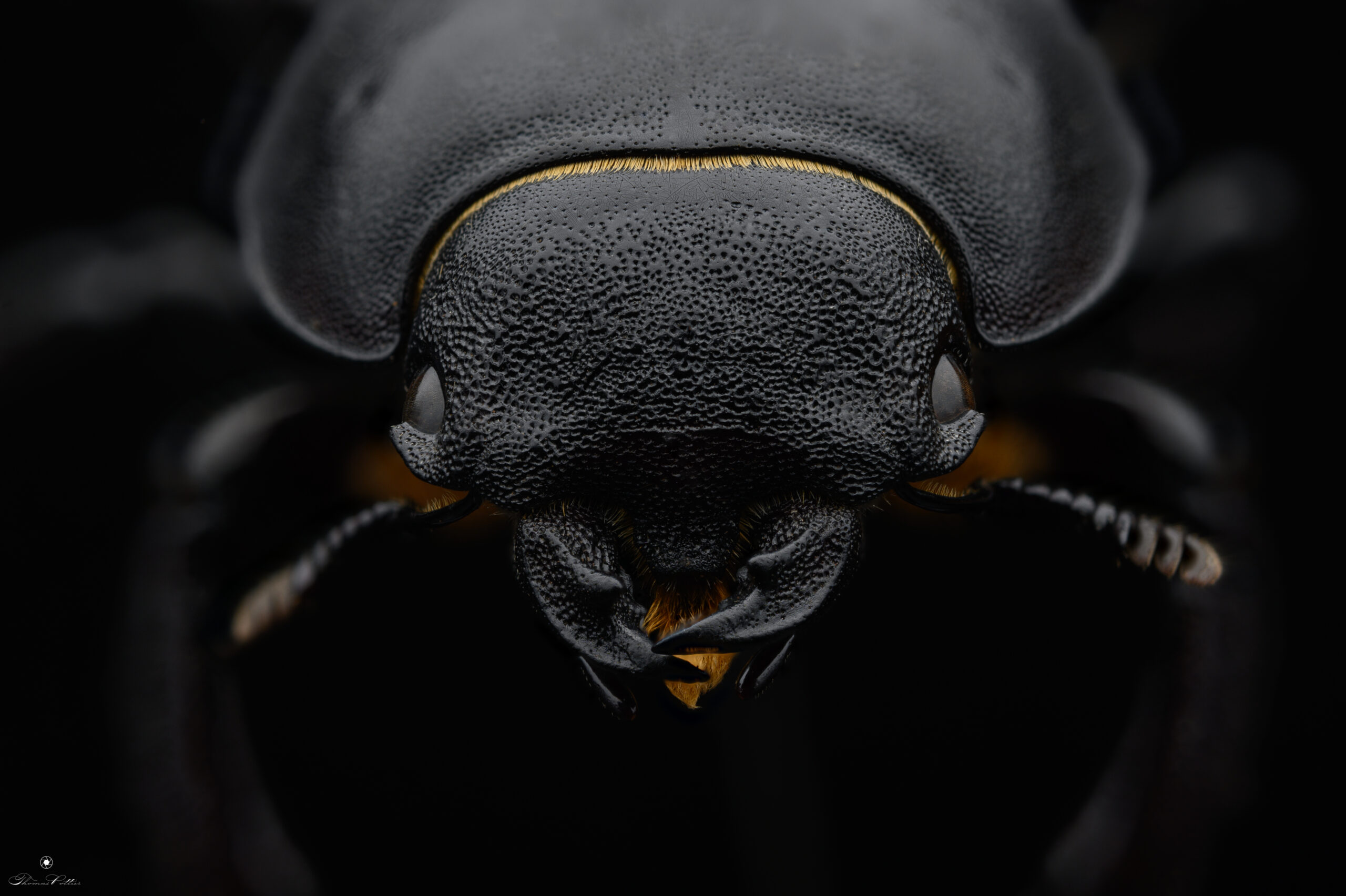
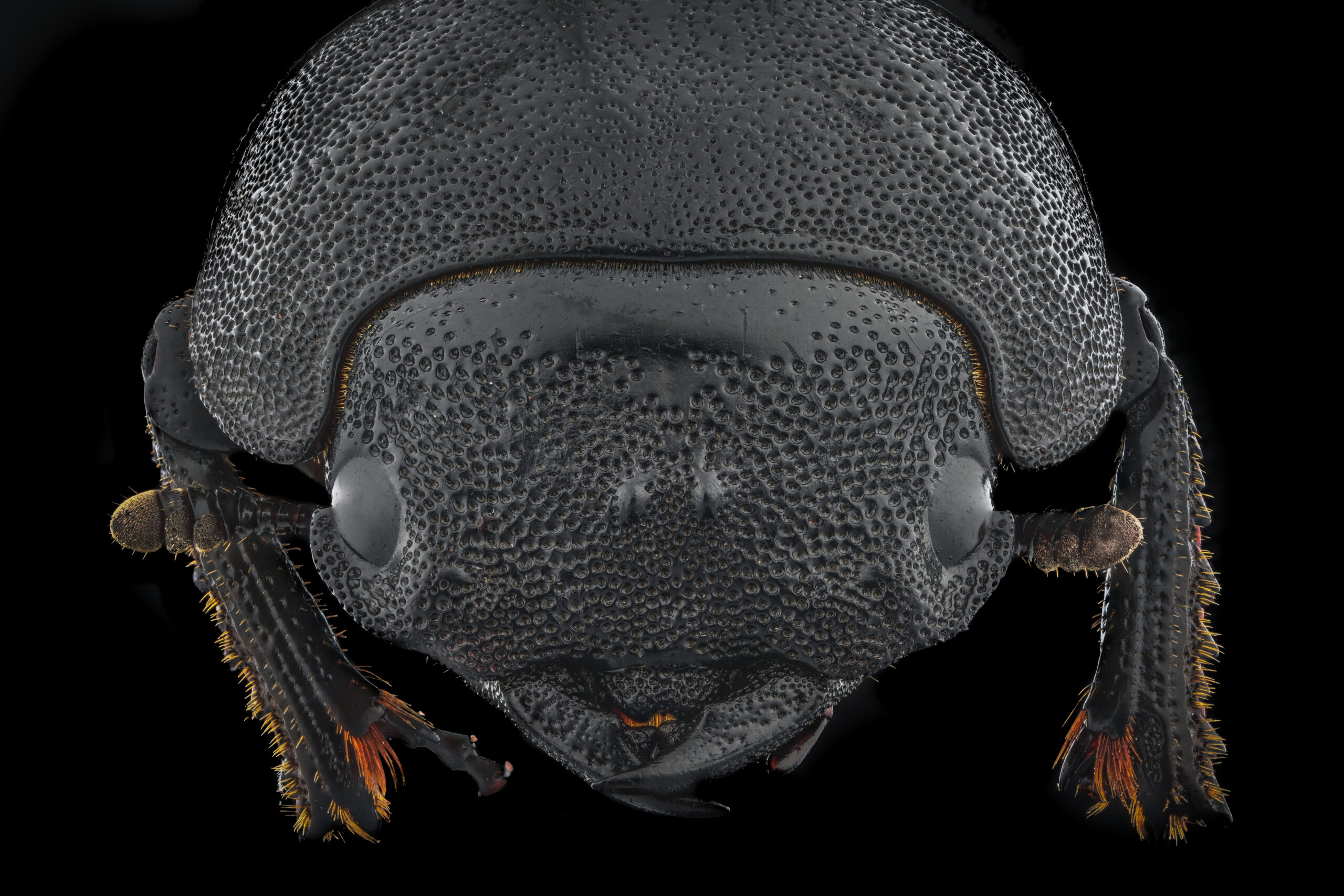
Female stag beetle (left)
Male lesser stag beetle (right)

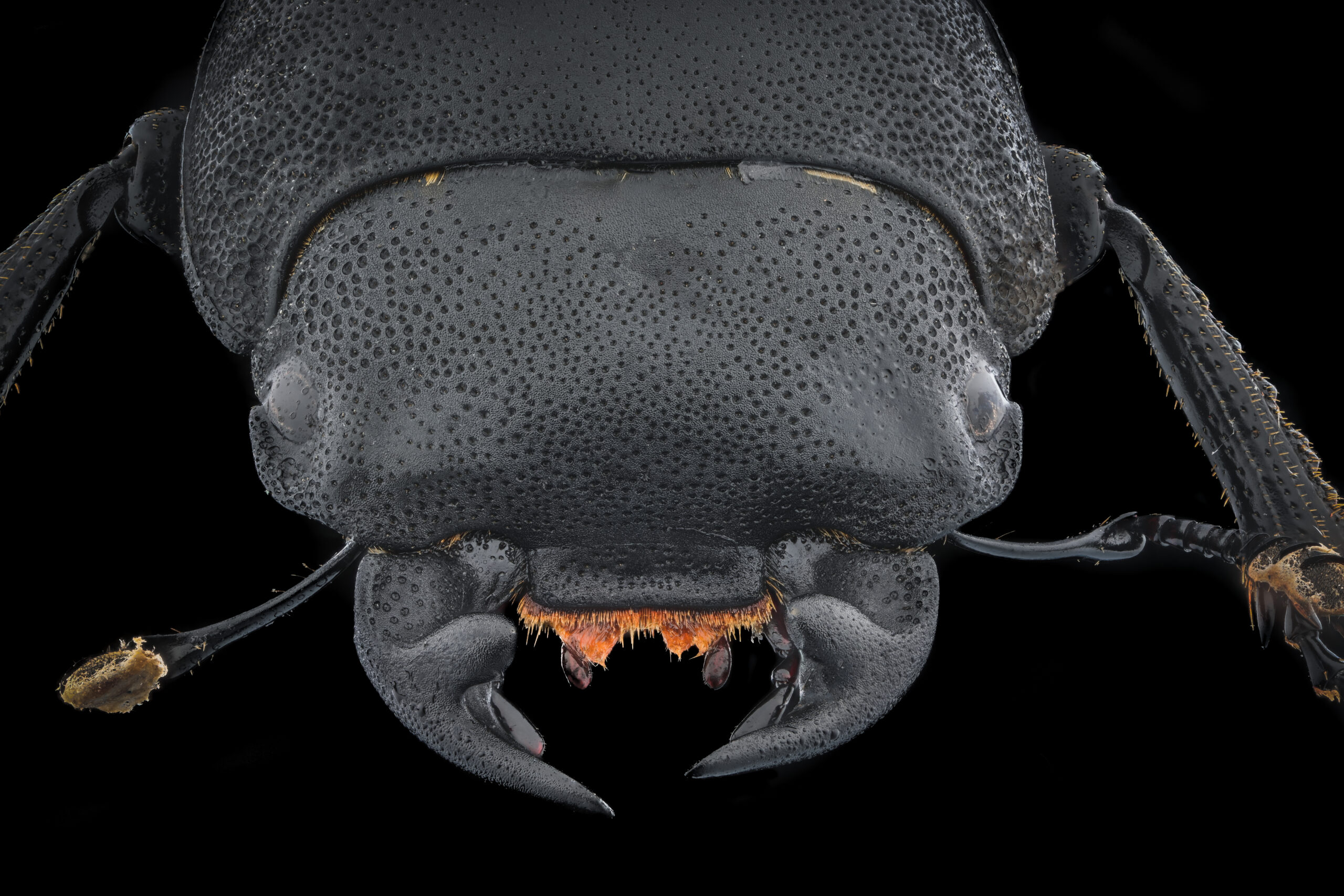
Other possibilities of mistakes
- Female rhinoceros beetle (Oryctes nasicornis)
2.5 – 4 cm long, oval, strongly curved, bulky. Larvae and beetles like to be found in compost and shredder piles, stag beetles are usually not found there. Important: distinct dent in the anterior neck shield area. - Male rhinoceros beetle

